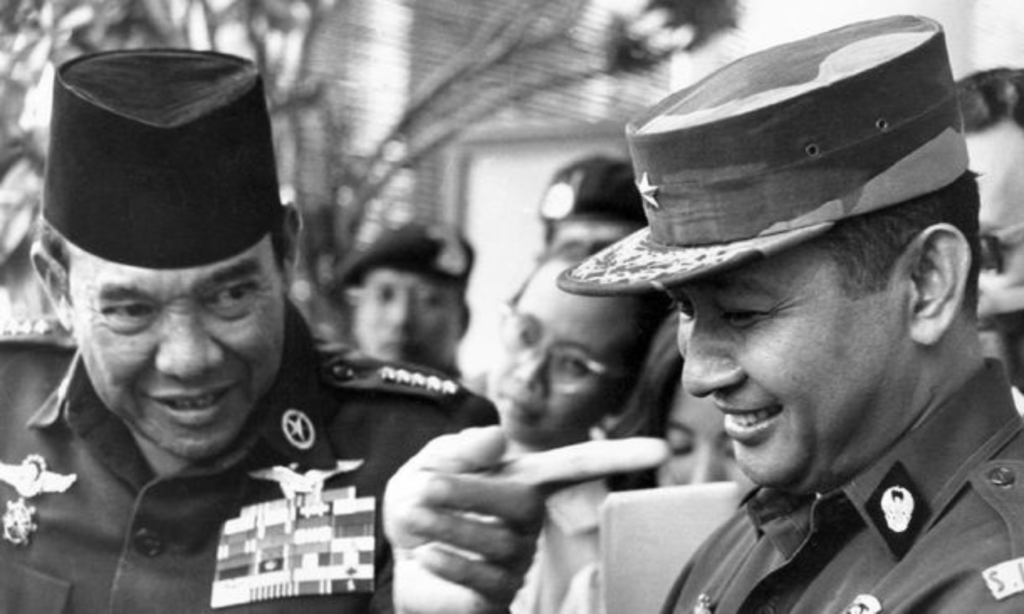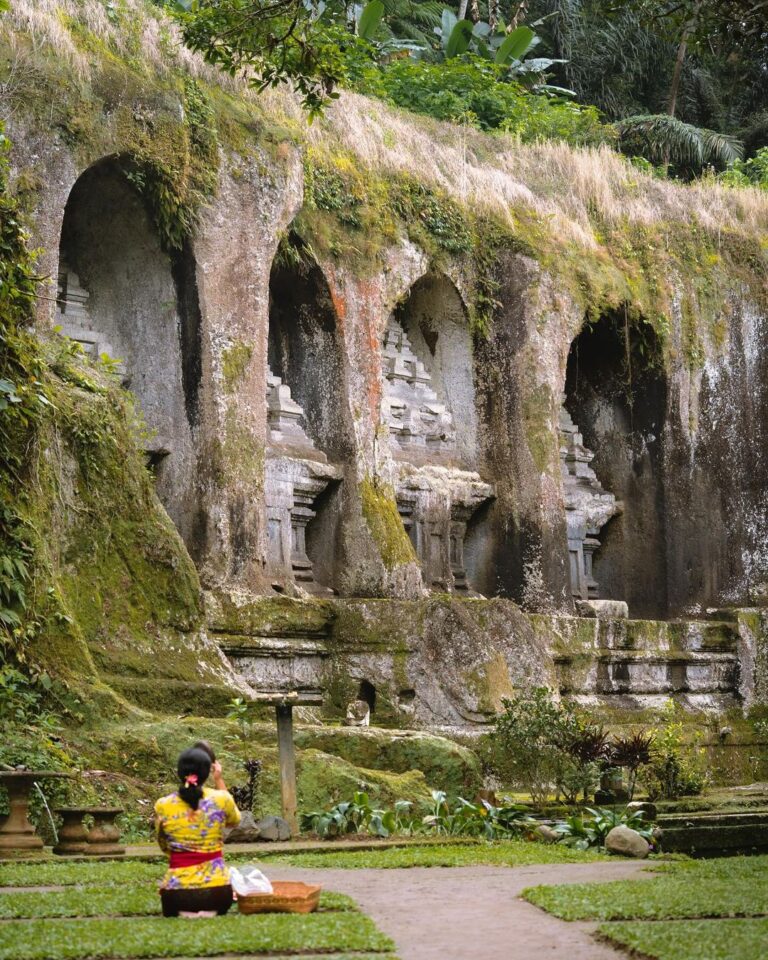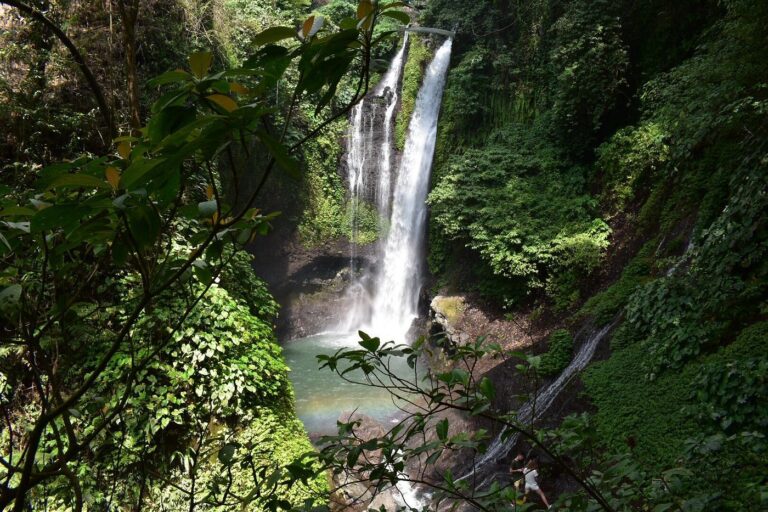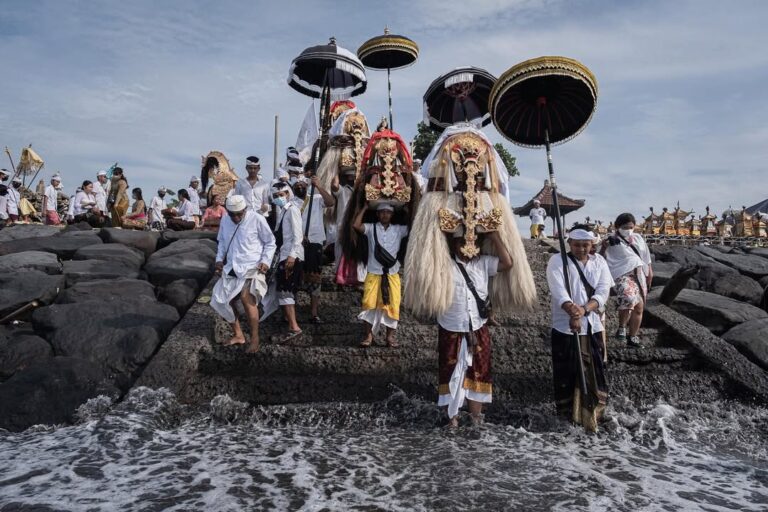Indonesia, the world’s largest island nation, boasts a captivating history as diverse and vibrant as its landscapes.
This archipelago paradise has journeyed through eras of powerful kingdoms, colonial encounters, and a hard-fought struggle for independence, ultimately emerging as a unified nation brimming with culture and resilience.
Let’s embark on a journey through time to explore the defining chapters of Indonesia’s story, delving deeper into the rise and fall of empires, the complexities of the colonial era, and the ongoing narrative of a nation finding its voice on the world stage.
Our story begins with the whispers of the deep past. Over 1.5 million years ago, the island of Java witnessed the presence of Homo Erectus, an early human ancestor, laying the trade kingdoms like Kutai in East Kalimantan and Tarumanegara in West Java.
These early kingdoms established trade routes with India and China, laying the foundation for the archipelago’s future role as a vital link in the global spice trade.
The 7th century marked a turning point with the rise of the Srivijaya Empire. Centred in what is now Palembang, South Sumatra, Srivijaya established itself as a powerful maritime empire.
They controlled key trade routes in the Straits of Malacca and Sunda, amassing wealth and influence through the spice trade.
Srivijaya not only flourished economically but also embraced Hinduism and Mahayana Buddhism, evident in the magnificent temple complex of Muaro Jambi.
Their influence spread across the archipelago, leaving an enduring mark on art, architecture, and religious practices.
Following Srivijaya’s decline in the 13th century, a new power emerged: Majapahit. Founded in East Java in the late 13th century, Majapahit rose to become Southeast Asia’s most dominant empire.
Under the reign of powerful monarchs like Hayam Wuruk and his Mahapatih Amangkubhumi (Prime Minister), Gajah Mada, Majapahit expanded its territory through conquest and diplomacy, bringing much of present-day Indonesia under its rule.

This era witnessed a flourishing of literature, with the epic poem Kakawin Nagarakretagama praising Majapahit’s grandeur.
Hinduism remained the dominant religion, but Majapahit also embraced elements of Tantric Buddhism, reflected in the captivating temples of Besakih in Bali.
However, internal conflicts and the rise of Islam eventually led to Majapahit’s decline in the 15th century.
Islamic Influence and the Rise of Sultanates
The arrival of Islam in the 13th century marked a significant shift in Indonesia’s religious landscape.
Initially taking root in coastal trading communities, Islam gradually spread through trade routes and missionary activities.
By the 16th century, powerful Islamic sultanates had emerged, particularly in Sumatra, Java, and Maluku. These sultanates, like Aceh in Sumatra, Demak and Mataram in Java, blended Islamic principles with local customs and traditions, creating a unique blend of cultures.
This era witnessed the construction of beautiful mosques, the development of Islamic calligraphy, and the flourishing of Islamic scholarship.
Colonial Encounters and the Dutch East Indies
The 16th century ushered in a new era with the arrival of European powers. The Portuguese, lured by the lucrative spice trade, were the first to establish a foothold in Maluku. However, it was the Dutch who emerged as the dominant colonial force.
The Dutch East India Company (VOC) was established in 1602, and through a combination of military conquest and shrewd political manoeuvring, the VOC gradually gained control over much of the Indonesian archipelago.
The colonial period was marked by exploitation and resource extraction. The Dutch focused on cultivating cash crops like coffee, sugar, and tea, utilising forced labour and a system of indirect rule through local elites.
This period also saw the rise of resistance movements, with figures like Prince Diponegoro in Java challenging Dutch authority.

World War II and the Fight for Independence
The Second World War disrupted the Dutch colonial order. Japan occupied Indonesia during the war, weakening Dutch control and fostering a strong nationalist spirit among Indonesians.
Following Japan’s surrender in 1945, Soekarno and Mohammad Hatta, iconic figures in the independence movement, declared Indonesia’s independence on August 17th, 1945.
However, Indonesia’s path since declaring independence has been a rollercoaster ride of political upheaval, economic booms and busts, and a constant fight to define its national identity, marked by resilience and a continuing quest for democracy.
The euphoria of independence was short-lived. The Dutch refused to relinquish control, leading to a brutal four-year war.
Finally, in 1949, Indonesia’s sovereignty was recognized by the Dutch. However, within the next two decades after the recognition, internal tensions simmered.
Soekarno, the charismatic first president, navigated a Cold War tightrope, balancing communist and nationalist factions. The powerful Indonesian Communist Party (PKI) gained influence, sparking unease in the West.
The Controversial 1965 Coup
The year 1965 witnessed a pivotal event shrouded in mystery – the 30 September Movement. A group of mid-ranking military officers, allegedly communist-leaning, kidnapped and killed six high-ranking generals.
Their motives remain unclear. Some believe they were genuinely attempting a coup, fearing a right-wing military takeover. Others suggest they were manipulated by the PKI.
Regardless, the event backfired spectacularly. General Soeharto, then head of the army’s strategic reserve, capitalised on the confusion.

He portrayed the killings as a full-blown communist coup attempt and rallied the military and anti-communist groups.
This unleashed a violent anti-communist purge across Indonesia, disproportionately targeting PKI members and suspected sympathisers. Estimates of casualties range from hundreds of thousands to over a million.
The extent of the PKI’s involvement in the coup and Soeharto’s use of the event to consolidate power remain debated by historians.
However, the United States of America’s Central Intelligence Agency (CIA)’s documented support for anti-communist elements in Indonesia during this period adds another layer of complexity.
Soeharto’s New Order: A Coin with Two Sides
General Soeharto’s rise to power in 1966 ushered in a period known as the Orde Baru (New Order). It marked a radical shift from Soekarno’s tumultuous rule.
Soeharto promised stability, security, and economic development. He delivered on some aspects, but his iron fist came at a significant cost.
Soeharto skillfully navigated the Cold War, securing support from the West. This, coupled with competent technocratic leadership, led to an economic boom.
Indonesia embraced foreign investment, focused on agriculture and resource extraction, and prioritised infrastructure development.
The results were impressive: GDP growth soared, poverty rates declined, and Indonesia became a self-sufficient rice producer.
However, this economic miracle wasn’t without its dark side. The government ruthlessly suppressed dissent. Political parties were tightly controlled, and any criticism of Soeharto was met with swift retribution.
Corruption became rampant, enriching Soeharto’s family and cronies. The military maintained a strong grip on power, often accused of human rights abuses in places like East Timor and Aceh.
Despite the authoritarian rule, Indonesian society underwent a significant transformation.
Education opportunities expanded, leading to a growing middle class. Urbanisation boomed, fueled by industrialisation. Yet, beneath the surface, simmered discontent.
The wealth gap widened, and social inequalities persisted. The government’s control over information limited free expression, fostering frustration among intellectuals and student movements.

The Seeds of ‘Reformasi’
By the late 1990s, the cracks in Soeharto’s regime began to show. Economic mismanagement led to rising inflation and unemployment.
The Asian Financial Crisis in 1997 exacerbated these problems. Public anger towards corruption and Soeharto’s continued hold on power reached a boiling point.
Student protests erupted in 1998, demanding reform. Soeharto, clinging to power, lost the support of the military and was forced to resign, marking the end of the New Order. A new era of reformasi (reformation) dawned.
Indonesia’s Democratic Journey
Indonesia’s democratic transition hasn’t been smooth. Challenges like corruption and religious extremism persist. But, the nation has held free and fair elections, with multiple presidents succeeding each other peacefully.
Indonesia is now a vibrant democracy, the world’s third-largest democracy by population.
Looking Ahead
Indonesia’s future is bright. Its young population, strategic location, and abundant resources position it for continued growth.
Yet, navigating social and economic inequalities, environmental concerns, and the ever-evolving geopolitical landscape are ongoing challenges.
One thing remains certain: Indonesia’s story is one of unwavering resilience and a determined pursuit of a bright future.





